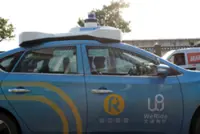At least 20% of the vehicles on the roadways will need to be autonomous in order to realise the traffic operational gains that come with connected vehicles, according to new research from Carnegie Mellon University. — dpa
Autonomous vehicles have the ability to make traffic move smoother. But first, they need to be more widely deployed. And that means creating the right regulations for the right cars.
At least 20% of the vehicles on the roadways will need to be autonomous in order to realise the traffic operational gains that come with connected vehicles, according to new research from Carnegie Mellon University.
Already a subscriber? Log in
Save 30% OFF The Star Digital Access
Cancel anytime. Ad-free. Unlimited access with perks.





